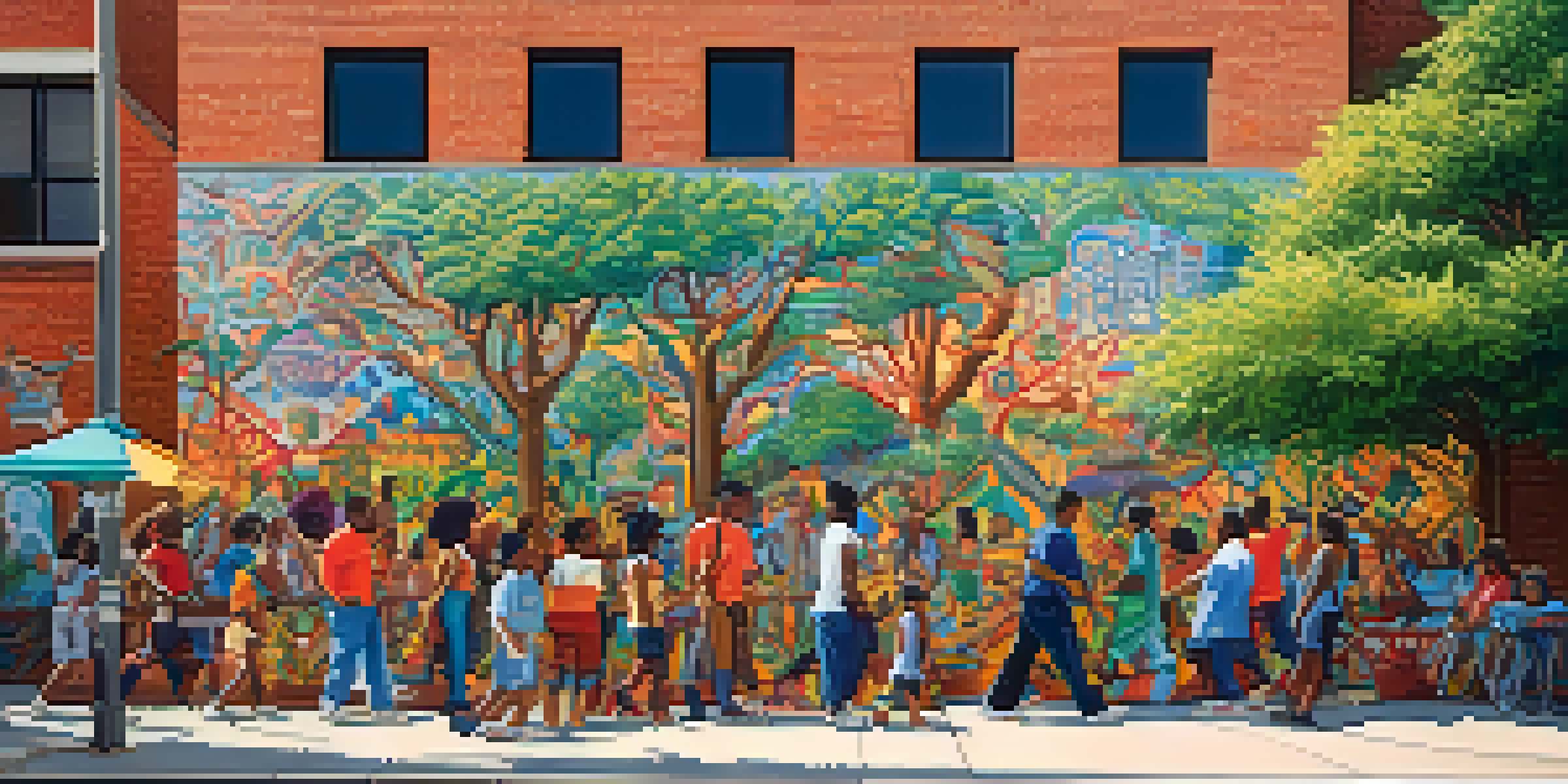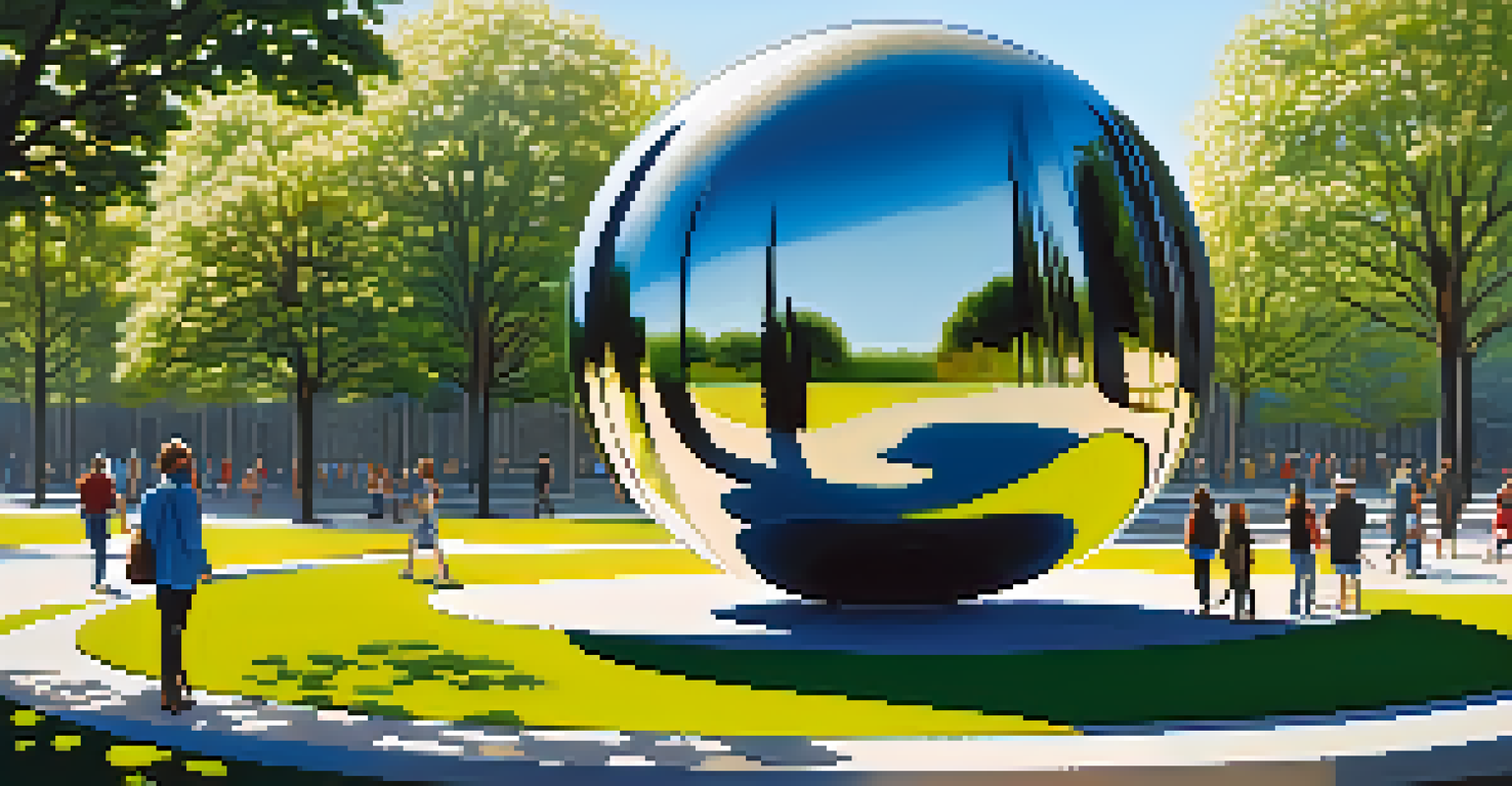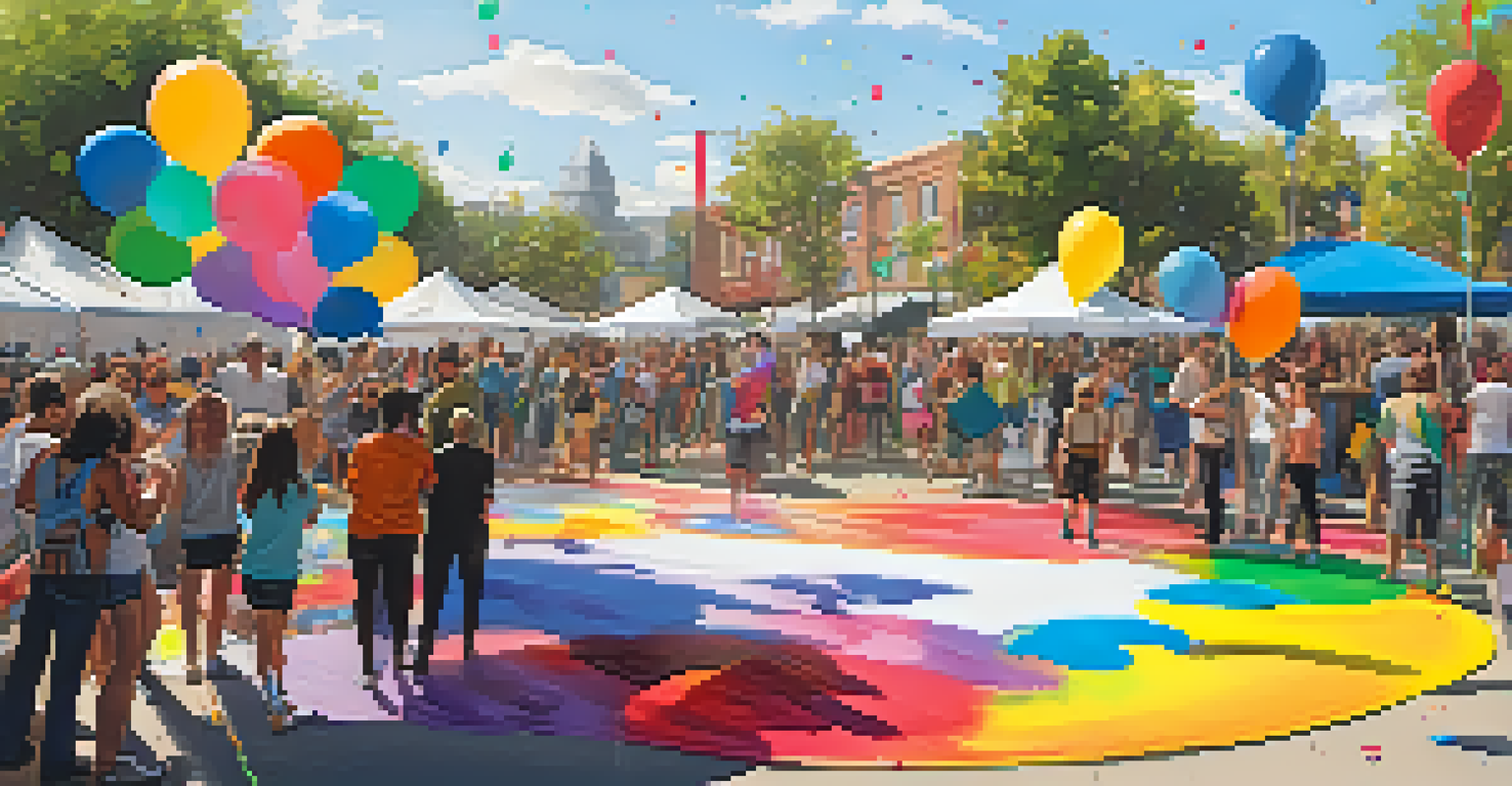The Role of Public Art in Shaping Urban Cultural Landscapes

Understanding Public Art and Its Importance
Public art encompasses a variety of creative expressions displayed in public spaces, such as murals, sculptures, and installations. These artworks not only beautify urban areas but also serve as a reflection of the community's values and identity. By engaging with public art, residents and visitors alike can gain insights into the culture and history of a place.
Public art is a way to engage the public in a dialogue about their community and their identity.
Moreover, public art plays a crucial role in sparking conversations and connecting people. It invites viewers to interact with their surroundings and challenges them to consider different perspectives. This interaction fosters a sense of belonging and ownership among community members, ultimately enhancing their connection to the urban environment.
In essence, public art is more than just decoration; it embodies the spirit of the community and acts as a catalyst for social dialogue. By promoting cultural expression, public art can help shape a city's unique character and contribute to its overall vibrancy.
Public Art as a Tool for Community Engagement
One of the most significant benefits of public art is its ability to engage communities. When artists collaborate with local residents, they create pieces that resonate with the public's experiences and aspirations. This collaborative process not only empowers individuals but also strengthens community bonds.

For instance, community-driven art projects often involve workshops, discussions, and feedback sessions, allowing residents to voice their ideas and concerns. This inclusive approach ensures that the final artwork reflects the diverse narratives within the community, fostering a sense of pride and ownership.
Public Art Engages Communities
Collaborative public art projects empower residents and strengthen community bonds.
As a result, public art can serve as a unifying force, bringing together people from different backgrounds and walks of life. By providing a platform for dialogue and collaboration, public art nurtures a sense of belonging and encourages civic participation.
Enhancing Urban Aesthetics Through Public Art
Public art significantly contributes to the aesthetic appeal of urban environments. Well-placed sculptures, murals, and installations can transform dull or neglected spaces into vibrant areas that attract visitors and locals alike. This transformation often leads to increased foot traffic and economic activity, benefiting local businesses.
Art is not what you see, but what you make others see.
Additionally, public art can create a sense of place, making a city more recognizable and distinct. Iconic artworks can become landmarks, enhancing the city's identity and making it more memorable for residents and tourists. For example, the famous Wall Street Bull in New York City has become a symbol of financial strength and resilience.
Ultimately, these artistic enhancements not only beautify the urban landscape but also create a more inviting atmosphere. As cities invest in public art, they can cultivate an environment that encourages exploration and appreciation of the urban space.
Public Art and Cultural Identity
Public art often reflects the cultural identity of a community. Artists draw inspiration from local histories, traditions, and social issues, weaving these elements into their work. This connection to culture allows public art to resonate deeply with viewers, fostering a sense of pride in their heritage.
Moreover, public art can serve as a platform for underrepresented voices. By showcasing diverse perspectives, artists can challenge stereotypes and promote understanding within the community. This inclusivity enriches the cultural tapestry of urban spaces, encouraging dialogue and empathy between different groups.
Public Art Enhances Urban Spaces
Art installations transform neglected areas into vibrant locales, boosting local economy and identity.
As communities evolve, public art can also adapt, reflecting changes and new narratives. This dynamic nature ensures that public art remains relevant and continues to capture the essence of the community, reinforcing its cultural identity over time.
The Economic Impact of Public Art Initiatives
Investing in public art can yield significant economic benefits for cities. Art installations and cultural events can attract tourists, leading to increased revenue for local businesses, such as restaurants and shops. A vibrant arts scene often makes a city more appealing to potential residents and investors.
Additionally, public art projects can create jobs for local artists and artisans, contributing to the creative economy. These initiatives often involve hiring local talent for design and installation, ensuring that funds circulate within the community. This investment in local talent fosters a sustainable artistic ecosystem.
Ultimately, the economic impact of public art goes beyond immediate financial gains; it contributes to the long-term vitality of urban areas. By enhancing the city's appeal and supporting local artists, public art initiatives can help create thriving cultural landscapes.
Public Art and Social Change
Public art has a unique ability to address social issues and inspire change. Artists often tackle topics like inequality, environmental concerns, and community struggles through their work. By making these issues visible, public art encourages conversations and prompts action within the community.
For example, murals that depict social justice themes can serve as powerful reminders of the ongoing fight for equity and representation. These artworks not only raise awareness but also galvanize community support for various causes, fostering a sense of solidarity among residents.
Public Art Addresses Social Issues
Through powerful expressions, public art raises awareness about social challenges and inspires community action.
In this way, public art becomes a tool for activism, allowing artists to engage with social issues in impactful ways. By encouraging dialogue and reflection, public art can contribute to positive change and inspire future generations to continue advocating for their communities.
Challenges Facing Public Art Projects
While public art has many benefits, it also faces challenges that can hinder its effectiveness. Issues such as funding limitations, bureaucratic hurdles, and community resistance can impede the development of successful public art initiatives. Navigating these challenges requires collaboration and creativity from artists, local governments, and community members.
For instance, securing funding for public art projects can be particularly difficult. Many artists rely on grants or sponsorships, which may be limited or competitive. By fostering partnerships with local businesses and organizations, artists can increase their chances of securing the necessary resources.

Lastly, community buy-in is crucial for the success of public art projects. Engaging residents from the outset and incorporating their feedback ensures that the artwork resonates with the community. By addressing these challenges head-on, public art can thrive and continue to enrich urban cultural landscapes.